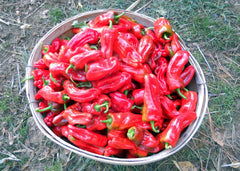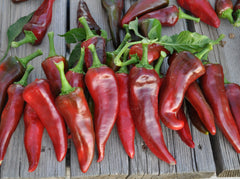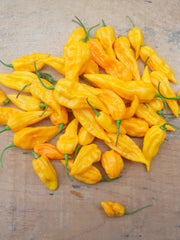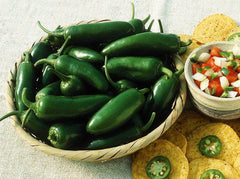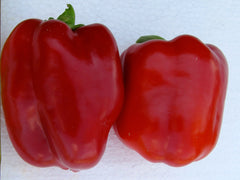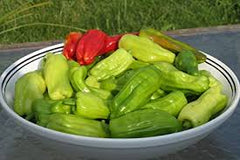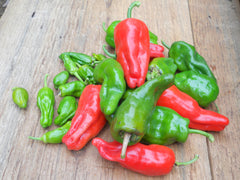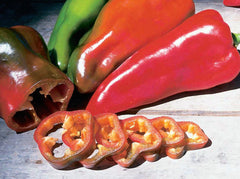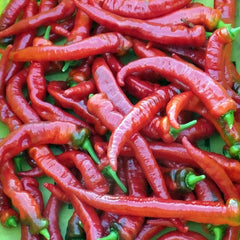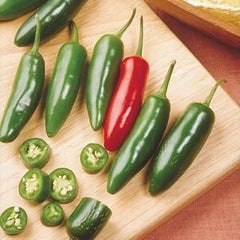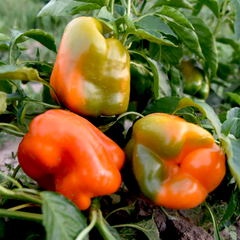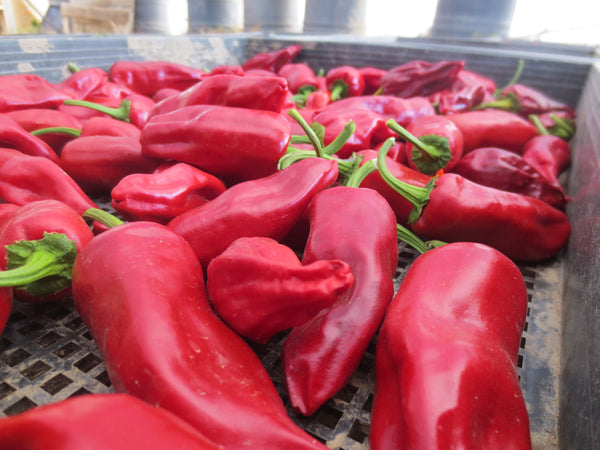Basque
Capsicum annuumDays from maturity calculated from the date of transplant. Average 3,920 seeds per ounce. Federal germination standard: 55%. Usual seed life: 3 years. Isolation distance for seed saving: 500 feet.
Planting Depth 1/4”
Soil Temp. Germ. 70-85˚F
Days to Germ. 21-30
Plant Spacing 18-24”
Row Spacing 3’
Days To Maturity 80–90
Full Sun, Moist Well Drained
- 25 Seeds$4.50
- 250 Seeds$22.50
Basque Pepper is the treasured chile of the Basque country, known for its robust and slightly smoky flavor. It plays a signature role in Basque cooking, but is also the name of a small village tucked away at the base of a mountain in the French side of the Basque region, lined with winding streets decorated with...
Basque Pepper is the treasured chile of the Basque country, known for its robust and slightly smoky flavor. It plays a signature role in Basque cooking, but is also the name of a small village tucked away at the base of a mountain in the French side of the Basque region, lined with winding streets decorated with bright red chilies that have been tied by hand, one at a time, onto cords. They are hung as garlands on the eaves of white farm houses so the chilies can get a little sun before being heated in a furnace and ground into powder. Basque peppers are mildly hot but only 5000 on scoville. Very good flavor.
Some chiles are given treasured status, where they are celebrated in art, the kitchen, and festivals. The Espelette Pepper has become a cultural and culinary icon in the Basque country where it has gained controlled-name status. Plant is from 2-5 ft. tall, has good yields of more aromatic and sweet than hot peppers maturing from green to a deep red, usually from 15-30 per plant.
This is a landrace variety that was introduced into the Nive Valley by Gonzalo Percaztegi in 1523, and grown in the Basque region and especially the village of Espelette since. To be known as "Piment d'Espelette", the chile must be grown, harvested and dried according to specific cultural traditions in the area around Espelette. Best used dried for its treasured powder. Also known as Espelette Pepper or Ezpeletako bipera.
Tags: Type: Roasting, Color: Red, Shape: Elongated, Heritage: Heirloom, Season: Summer